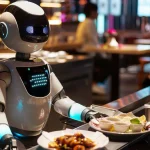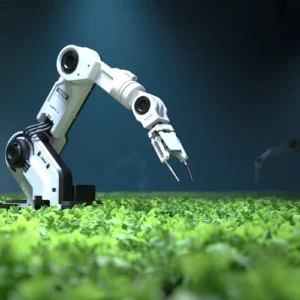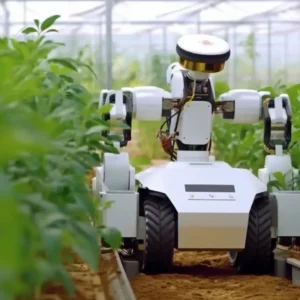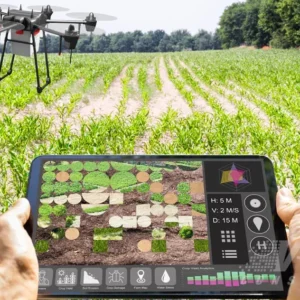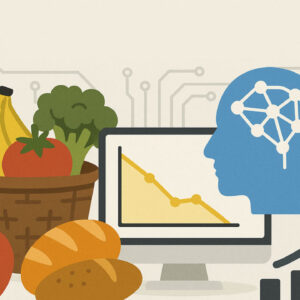The restaurant industry, traditionally reliant on human interaction and manual processes, is undergoing a technological revolution with the integration of Artificial Intelligence (AI). From streamlining operations to enhancing customer experience and personalizing menu offerings, AI is transforming how restaurants operate and serve their patrons. Artificial Intelligence (AI) is revolutionizing the restaurant industry by offering innovative solutions that enhance operational efficiency, promote sustainability, and elevate the overall customer experience.
From predictive analytics optimizing inventory management to AI-driven robots assisting in food preparation and delivery, the integration of this technology is multifaceted. Moreover, AI’s role in personalizing customer interactions and improving decision-making processes underscores its potential to not only streamline operations but also to foster a more sustainable and customer-centric business model. This article delves into the myriad ways AI is transforming the culinary landscape, presenting both challenges and opportunities for restaurateurs and patrons alike.
Applications
1. Personalizing the Dining Experience
Modern customers expect personalized experiences, and AI is key to meeting this demand.
- Personalized Menus: AI-powered systems analyze customer preferences, dietary restrictions, and past orders to recommend tailored dishes.
- Loyalty Programs: AI tools enhance loyalty programs by offering rewards based on customer behavior and spending patterns. For instance, frequent diners may receive discounts or meal suggestions they’re likely to enjoy.
- Voice Assistants and Chatbots: A customized virtual assistant allows customers to book tables, place orders, and ask questions, offering convenience and a touch of personalization.
2. Smart Ordering Systems
AI-driven ordering platforms have streamlined the way customers place orders.
- Kiosk Ordering: Touchscreen kiosks equipped with AI recommend items based on real-time data, such as popular orders or seasonal specials.
- Voice Ordering: Restaurants are integrating voice-recognition systems to make ordering faster and more intuitive.
- Mobile Apps: AI in mobile apps predicts what customers are likely to order based on their history and simplifies the checkout process.
3. Dynamic Pricing Strategies
AI algorithms analyze factors like customer demand, time of day, and inventory levels to implement dynamic pricing strategies. For example, a restaurant may offer discounts on unsold items during off-peak hours to reduce food waste and increase sales.
4. Inventory and Supply Chain Management
Efficient inventory management is a challenge for restaurants, but AI provides solutions:
- Demand Prediction: AI predicts inventory needs by analyzing historical sales, weather conditions, and local events.
- Waste Reduction: By identifying patterns of over-ordering or waste, AI helps restaurants optimize their stock and minimize losses.
- Supplier Management: AI tools automate ordering from suppliers, ensuring timely replenishment and preventing stockouts.
5. Enhancing Kitchen Operations
AI optimizes kitchen workflows and improves food quality with:
- Smart Kitchen Appliances: AI-enabled ovens and fryers adjust cooking times and temperatures automatically for consistent results.
- Workflow Automation: AI systems manage kitchen tasks, such as ingredient preparation or dish assembly, reducing errors and increasing speed.
- Quality Control: Cameras and sensors powered by AI ensure food meets quality standards before being served.
6. Marketing and Customer Engagement
AI-driven marketing strategies improve customer engagement by:
- Targeted Advertising: AI analyzes customer demographics and preferences to create personalized ad campaigns.
- Social Media Monitoring: AI tools track reviews and mentions on social platforms, enabling restaurants to address feedback promptly.
- Menu Optimization: By analyzing sales data, AI identifies which menu items are popular and which need adjustments or promotions.
7. Robot-Assisted Service
Robots are becoming an integral part of restaurant operations:
- Food Preparation Robots: Machines like Flippy, the burger-flipping robot, perform repetitive kitchen tasks with precision.
- Server Robots: Robots deliver food to tables, enhancing novelty and efficiency.
- Cleaning Robots: AI-powered cleaning bots maintain hygiene by sanitizing floors and surfaces autonomously.
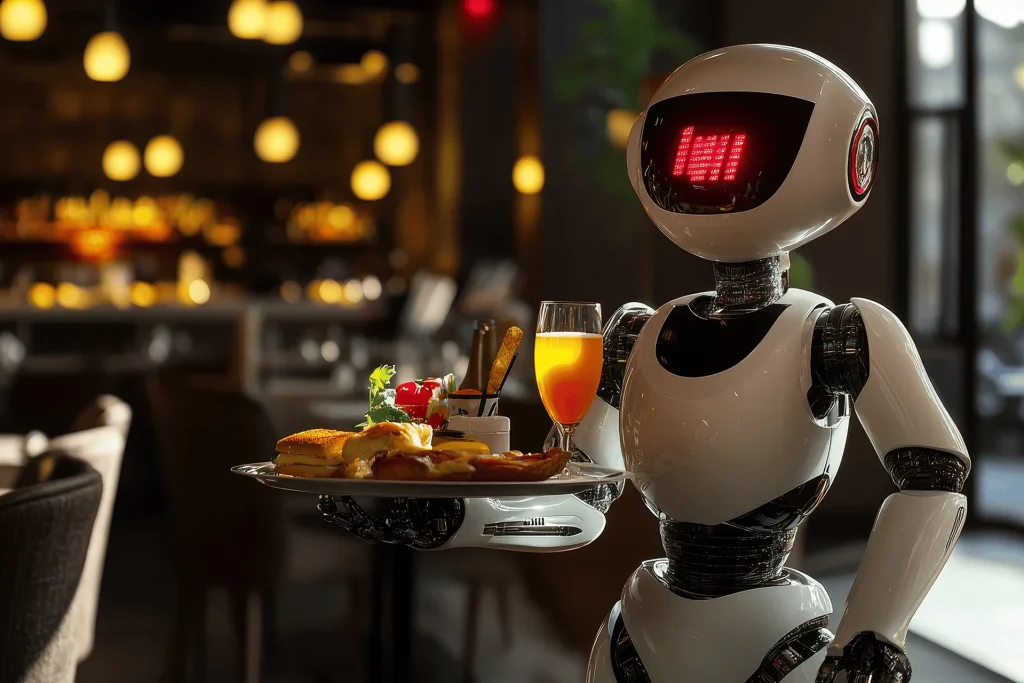
Benefits of AI in Restaurants
1. Increased Efficiency
AI automates time-consuming tasks, freeing up staff to focus on customer interaction and creativity. For instance, automated inventory management reduces the time spent on manual stock checks.
2. Enhanced Customer Satisfaction
Personalized recommendations, faster service, and consistent food quality contribute to a better dining experience. AI’s ability to remember customer preferences fosters loyalty and repeat business.
3. Reduced Costs
AI helps restaurants reduce costs without compromising quality or service by optimizing inventory, minimizing waste, and streamlining operations.
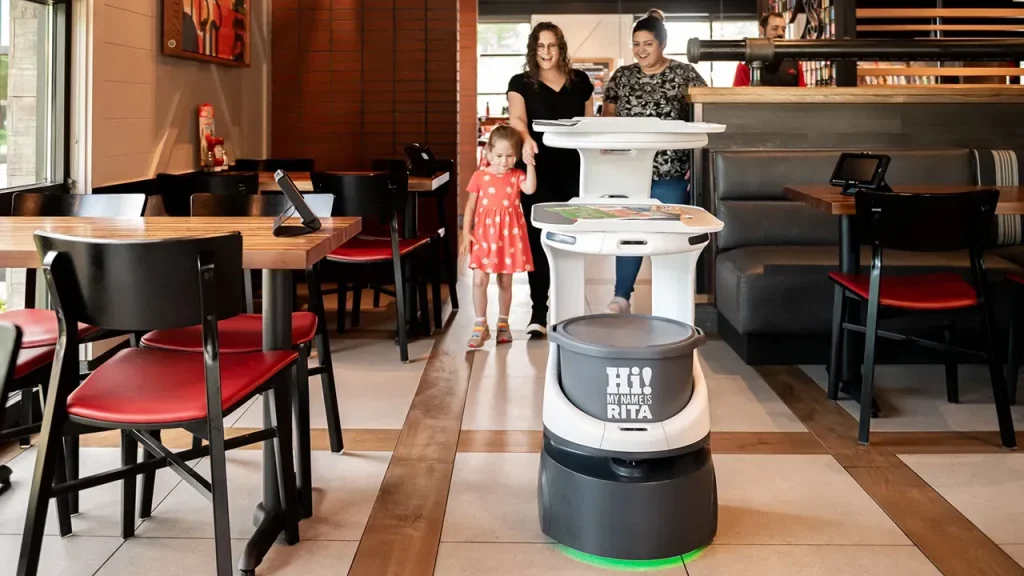
4. Improved Decision-Making
AI provides actionable insights through data analysis, enabling restaurant owners to make informed decisions about menu changes, staffing, and marketing strategies.
5. Sustainability
AI promotes sustainability by reducing food waste, optimizing energy usage in smart kitchens, and enhancing supply chain transparency.
Challenges of Implementing AI in Restaurants
1. High Initial Investment
Implementing AI systems requires a significant upfront investment in technology, infrastructure, and training. For smaller restaurants, these costs can be a barrier.
2. Data Privacy Concerns
AI systems rely on collecting and analyzing customer data, raising privacy concerns. Restaurants must ensure compliance with data protection regulations, such as GDPR or CCPA.
3. Resistance to Change
Staff and customers may initially resist AI adoption due to unfamiliarity or fear of reduced human interaction. Clear communication and training are essential to overcome this hurdle.
4. Maintenance and Updates
AI systems require regular maintenance and updates in restaurants to stay relevant and effective, adding to operational costs.
5. Dependence on Reliable Internet Connectivity
Most AI systems operate in the cloud, making them dependent on stable internet connections. Connectivity issues can disrupt operations, especially in remote areas.
Future of AI
The future of AI in restaurants is promising, with emerging trends poised to revolutionize the industry further:
1. Fully Automated Restaurants
Concepts like fully automated restaurants, where robots handle everything from cooking to serving, are gaining popularity. Chains like Spyce and Eatsa have already adopted this model, offering speed and consistency.
2. Predictive Menu Engineering
AI will become more advanced at predicting food trends and helping restaurants create menus that align with customer preferences and market demands.
3. Advanced Chatbots
Future chatbots will provide hyper-personalized customer interactions, handling complex queries and recommending dishes based on mood, dietary needs, or current health goals.
4. AI-Driven Sustainability Initiatives
AI will play a key role in achieving sustainability goals by monitoring and reducing energy consumption, optimizing water usage, and ensuring minimal waste in restaurant operations.
5. Augmented Reality (AR) Menus
AI and AR integration will create interactive dining experiences where customers can visualize dishes in 3D before ordering, enhancing decision-making and engagement.
6. Emotion Recognition
AI systems equipped with emotion recognition technology will analyze facial expressions and body language to assess customer satisfaction in real time, enabling immediate service improvements.
Case Studies
1. McDonald’s
McDonald’s has embraced AI technology to enhance the customer experience, particularly in drive-thru ordering and menu personalization. With their acquisition of Dynamic Yield, they can recommend menu items based on factors like the weather, time of day, and customer preferences. For instance, on a hot day, customers might see suggestions for cold beverages and ice cream, whereas in the morning, breakfast items are prominently featured. This dynamic menu personalization not only improves customer satisfaction but also boosts sales by aligning offerings with customer needs and desires in real-time.
2. Domino’s Pizza
Domino’s has integrated AI into their operations through their virtual assistant, “Dom.” This AI-powered assistant handles a range of tasks, from taking orders to tracking deliveries and providing real-time updates to customers. Dom can understand and process voice and text orders, making the ordering process more efficient and user-friendly. Additionally, Dom can provide personalized offers based on past orders and preferences, enhancing the overall customer experience. The integration of AI helps Domino’s streamline their operations, reduce wait times, and ensure a smooth and engaging ordering process for their customers.
3. Starbucks
Starbucks leverages AI within its mobile app to offer a highly personalized customer experience. The app utilizes AI algorithms to analyze customer preferences and order history, enabling it to provide tailored drink recommendations and rewards. For example, if a customer frequently orders a specific type of coffee, the app might suggest new variations of that coffee or complementary food items. This level of personalization extends to the rewards program as well, offering customers incentives that are most relevant to their purchasing habits. By integrating AI, Starbucks not only enhances customer satisfaction but also drives loyalty and repeat business.
These case studies illustrate how AI technology is transforming the restaurant industry by enhancing personalization at all levels, streamlining operations, and improving overall customer satisfaction. As AI continues to evolve, we can expect to see even more innovative applications that further revolutionize the dining experience.
Conclusion
AI is transforming the restaurant industry, driving efficiency, personalization, and innovation. From smart ordering systems and robot-assisted service to advanced marketing strategies and sustainable practices, AI offers solutions to many of the challenges restaurants face today.
While the journey to full AI adoption has hurdles, such as high costs and data privacy concerns, the benefits far outweigh the challenges. As technology continues to evolve, AI will become an integral part of the restaurant experience, shaping the way how food is prepared, served, and enjoyed.
For restaurants, embracing AI is no longer optional—it’s the future. By leveraging AI, restaurants can not only stay competitive but also redefine the dining experience for a new generation of tech-savvy consumers.




